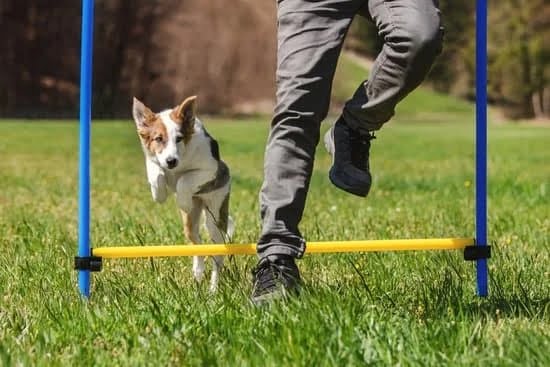Crate training is a valuable tool for dog owners to ensure their pet’s safety, comfort, and well-being. Many pet owners wonder how long to keep a dog in crate training, as it can be a crucial aspect of the process. Understanding the benefits and importance of crate training is essential for establishing a successful routine that meets both the needs of the dog and the owner.
As part of responsible pet ownership, it’s important to recognize that every dog has unique needs and preferences. This individuality plays a significant role in determining the duration of crate training required for each dog. Factors such as age, temperament, and past experiences all influence the time and approach needed to effectively train a dog to feel comfortable and secure in a crate.
In this article, we will explore various aspects of crate training for dogs, including age considerations, signs of distress to watch out for, recommended schedules for different age groups, as well as alternative methods for dogs who may not respond well to traditional crate training. Furthermore, we will provide guidance on monitoring progress and making necessary adjustments to ensure that your dog’s crate training experience is positive and beneficial for both you and your furry friend.
Understanding Your Dog’s Needs
When it comes to crate training, it’s important to understand that each dog is unique and has different needs. These individual needs can greatly impact the duration of crate training, as some dogs may require more time to adjust and feel comfortable in their crate compared to others. Factors such as breed, personality, past experiences, and even anxiety levels can all play a role in how long a dog should be kept in a crate during training.
To better understand your dog’s specific needs, consider the following factors:
- Breed: Certain breeds may have a natural inclination towards crate training due to their instincts or history of use in breeding or working environments. For example, herding breeds like Border Collies may adapt quickly to crate training due to their instinctual behavior.
- Personality: Just like people, dogs have their own personalities. Some dogs may be more independent and adaptable, while others may be more anxious or clingy. Understanding your dog’s personality can help determine how long they should be kept in a crate during training.
- Past experiences: Dogs with negative past experiences related to confinement may require extra patience and care when introducing them to a crate. It’s important to approach the training process with sensitivity and understanding.
It’s important for pet parents to be attentive and patient when determining how long to keep their dog in the crate during training. Paying close attention to your dog’s behavior, body language, and overall well-being can provide valuable insight into whether they are ready for longer periods of time in the crate or if adjustments need to be made for their comfort and success in the training process.
Age Considerations
When it comes to crate training a dog, age plays a crucial role in determining how long a dog should be kept in the crate during training. Puppies, for example, have different needs than adult dogs and require shorter training periods due to their smaller bladders and higher energy levels. Understanding how age impacts crate training can help ensure a successful and effective training process.
Age considerations when crate training your dog:
1. Puppies: For puppies, it’s important to start with short intervals in the crate, gradually increasing the time as they grow older. A general rule of thumb is that puppies can hold their bladder for approximately one hour for every month of age. For example, a 2-month-old puppy may only be able to stay in the crate for 2 hours before needing a bathroom break.
2. Adolescent Dogs: Adolescent dogs, typically between 6 months and 2 years old, may have more energy and require regular exercise and mental stimulation. This age group may benefit from shorter crate training sessions interspersed with playtime and walks to prevent boredom and anxiety.
3. Adult Dogs: Adult dogs can generally tolerate longer periods in the crate, but it’s still important to consider their individual needs and habits. Factors such as breed, size, and overall health can also impact how long an adult dog should be kept in a crate during training.
By understanding the specific age-related needs of your dog, you can tailor the crate training schedule to suit their requirements while promoting positive reinforcement and comfort within the crate environment. It’s important to be patient and observant throughout the process to ensure that your dog’s needs are being met effectively whilst also using time appropriately according to its life stage.
Remember that every dog is unique so monitoring progress closely is crucial-knowing when they need more time or less will help kickstart easier transitions.
Crate Training Schedule
When it comes to crate training your dog, having a structured schedule is essential. This not only helps your dog understand expectations but also ensures that they are not confined for too long, leading to distress or anxiety. The duration for crate training varies depending on the age of your dog and it’s important to tailor the schedule to their individual needs.
For puppies, it’s crucial to start with short intervals in the crate and gradually increase the time as they become more accustomed to it. A general guideline for puppies is that they can spend about 30-60 minutes in a crate at a time. For adult dogs, they can usually handle longer periods, around 4-6 hours depending on their individual needs and comfort level.
It’s important to keep in mind that these are just guidelines and each dog is unique. It’s crucial to observe their behavior and adjust the duration accordingly based on how comfortable and relaxed they are in the crate. Overall, patience and consistency are key when determining how long to keep a dog in crate training.
| Age Group | Recommended Crate Time |
|---|---|
| Puppies (8-10 weeks) | 30-60 minutes |
| Puppies (11-14 weeks) | 1-3 hours |
Signs of Distress
Recognizing Signs of Distress
When crate training a dog, it is crucial to be able to recognize signs of distress. These signs may include excessive whining or barking, pacing back and forth in the crate, attempting to escape the crate, or exhibiting destructive behavior such as chewing on the crate bars. It’s important for pet owners to understand that these behaviors are not simply a result of disobedience, but rather a sign that the dog is experiencing stress or discomfort.
Adjusting Training Duration
If you notice your dog displaying signs of distress while in their crate, it may be time to adjust the training duration. For example, if you have been following a schedule that gradually increases crate time and your dog starts showing signs of distress when left alone for longer periods, it may be best to scale back and give them more frequent breaks outside the crate.
Additionally, if your dog consistently exhibits distress behaviors even after adjusting the duration and providing mental and physical stimulation outside of the crate, it could indicate that traditional crate training may not be suitable for your pet. In such cases, it might be necessary to explore alternative training methods that better suit your dog’s individual needs.
Ensuring Comfort and Safety
It’s important for pet owners to prioritize their dog’s comfort and safety during crate training. This means being attentive to any signals of distress and making necessary adjustments to ensure that the training process remains positive and effective. Remember that every dog is unique, so being attuned to their individual needs is key in determining how long they should be kept in a crate during training.
Gradual Transitioning
When it comes to crate training your dog, it’s important to understand that the duration your dog should spend in the crate will vary depending on their individual needs and age. However, one common aspect of crate training is the need for gradual transitioning. This process involves slowly increasing the amount of time your dog spends in the crate as they become more comfortable and confident with the space.
An important tip for gradual transitioning is to start with short periods of time in the crate and gradually increase it as your dog becomes accustomed to being confined. For puppies, this could mean starting with just a few minutes at a time and slowly working up to longer durations. For adult dogs who are new to crate training, a similar approach can be taken.
It’s also crucial to make sure that the crate is associated with positive experiences for your dog. This means providing them with treats, toys, and comfort items while they are in the crate, so they begin to view it as a safe and enjoyable space. This positive association can help make the transition smoother and reduce any anxiety or stress associated with being confined.
| Age Group | Initial Time in Crate | Gradual Increase |
|---|---|---|
| Puppies (8-10 weeks) | 10-30 minutes | Add 5-10 minutes every few days |
| Adult Dogs (newly introduced) | 15-30 minutes | Add 10-15 minutes every few days |
By following these tips for gradual transitioning and using positive reinforcement, you can help your dog become more comfortable with crate training over time. Remember, every dog is different, so be patient and adjust the training duration based on your individual pet’s needs and progress.
Alternative Methods
When it comes to crate training, not all dogs respond well to the traditional method of confinement. Some may experience anxiety or distress when placed in a crate, making it necessary to explore alternative training methods. It’s important for pet owners to understand that while crate training can be effective for many dogs, it may not be suitable for every individual canine.
Positive Reinforcement Training
One alternative method to traditional crate training is positive reinforcement training. This approach focuses on rewarding desired behaviors with treats, toys, or praise, rather than using confinement as a means of discipline. By using positive reinforcement, pet owners can encourage their dogs to exhibit the desired behavior without resorting to the use of a crate.
Clicker Training
Clicker training is another alternative method that can be effective for dogs who may not respond well to crate training. This technique involves using a small device that emits a clicking sound as a means of marking and reinforcing desirable behaviors in real time. Clicker training can be especially useful for dogs who are highly food-motivated and quickly learn to associate the click with a reward.
Behavioral Reframing
For some dogs, behavioral reframing may be necessary to address underlying issues that make them unsuitable candidates for traditional crate training. This approach involves working with a professional dog trainer or behaviorist to identify and modify negative behaviors through techniques such as desensitization and counter conditioning. By addressing the root cause of the aversion to crate training, pet owners can help their dogs develop more positive associations with confinement.
Monitoring Progress
In conclusion, crate training is a valuable tool for dog owners to help provide structure and security for their pets. Understanding the individual needs of each dog is crucial in determining the appropriate duration for crate training. Factors such as age, temperament, and previous experiences all play a role in how long a dog should be kept in a crate during training.
It is important for dog owners to adhere to a crate training schedule that takes into account the specific needs of their pet. This includes providing recommended time increments for different age groups and gradually increasing the time spent in the crate as the dog becomes more comfortable and confident. Additionally, being able to recognize signs of distress in a crated dog is essential in knowing when it may be time to adjust the training duration.
While crate training may not be suitable for every dog, there are alternative methods available for those who do not respond well to traditional crate training. However, regardless of the method chosen, it is crucial for dog owners to monitor their pet’s progress and make adjustments to the crate training duration as needed. By doing so, they can ensure that their dogs are receiving appropriate care and support throughout the training process.
Frequently Asked Questions
When Should I Stop Crate Training My Dog?
Knowing when to stop crate training your dog depends on their behavior and comfort level. Some dogs may never need a crate again, while others may always benefit from having a safe space.
How Long Should a Dog Be in a Crate While Training?
The length of time a dog should spend in a crate while training varies depending on their age, size, and individual needs. Typically, puppies can only hold their bladder for a few hours, while adult dogs may be able to hold it longer.
When Can I Start Leaving My Dog Out of the Crate?
You can start leaving your dog out of the crate once they have consistently demonstrated good behavior and the ability to be trusted alone. This could take weeks or even months of successful training and positive reinforcement.

Welcome to the blog! I am a professional dog trainer and have been working with dogs for many years. In this blog, I will be discussing various topics related to dog training, including tips, tricks, and advice. I hope you find this information helpful and informative. Thanks for reading!





